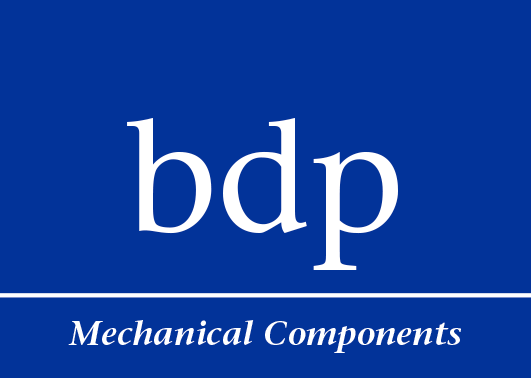Newsletter August 2023:
By: Jack Wang
How to effectively control supplier quality
When procuring goods, it is of utmost importance that the delivered products meet the required quality standards demanded by the customer. Effective supplier quality control is of great significance in minimizing the risk of receiving defective deliveries.
1. Conduct technical reviews during the early stages of product development to ensure an optimal production process:
In the early phases of project development, it is essential to thoroughly review and confirm the drawing requirements and standards with the supplier, ensuring the feasibility of drawing production and providing a detailed production plan to the supplier. This helps to ensure that the plan is realistic and meets the requirements of future mass production (e.g., mold manufacturing, mold flow analysis, machining process flow, equipment selection, tool inspection, consistency of measurement plans, etc.). During this time, visit the supplier’s site to inspect the production process, casting molds, and machinery firsthand and make further improvements based on actual manufacturing results during the trial phase.
2. In the early phase of trial production, it is crucial to control the supplier’s process documents, such as control plans (including product and process control), pFMEA, process flow charts, on-site operating instructions, and inspection instructions. Additionally, conduct an audit of the production site, determine the production process capability, analyze the measurement system, identify various quality inspection and control stations, determine the GP12 control location, control points, and control methods, and review them. During the first three months of small-scale production, suppliers should provide a bi-weekly report on the production status. This report should primarily include the scrap rate for each process and the GP12 station, as well as the SPC control chart for critical characteristics and identify the top three quality problems and their improvement plans. This ensures a reliable and stable production process for mass production in the long run.
3. Improve on-site supplier control capabilities. Conduct regular audits of the quality control systems at the suppliers and promptly address and improve any identified issues. The audit should cover the following aspects:
a) Process and product control: Suppliers should provide detailed process control information for each operation and be able to create corresponding records promptly. The recorded data should align with the actual on-site values. For product control points, appropriate frequencies should be set based on their significance, especially for critical characteristics with a minimum SPC control (CPK greater than 1.33). If the CPK value does not meet the standard, a complete inspection is required.
b) Machine operators should complete equipment inspections promptly at the beginning of each shift, ensuring that the measured values match the actual equipment values.
c) Defective and reworked products should be promptly color-coded, stored in designated red boxes, and sealed. Additionally, there should be a special yellow box for storing products that require re-inspection.
d) On-site areas for acceptable products, defective products, products that require re-inspection, and inspection waiting zones should be clearly separated and marked to avoid confusion.
e) Product traceability should always be maintained. Machine operators should carefully record production information for each operation on the circulation card, particularly noting the number of defective parts. The circulation card corresponds to the shipment packaging batch number and must be retained for an extended period. Additionally, the information on the circulation card should be linked to the inspection data of the shift, allowing traceability from product batch information to shift inspection data.
f) Measurement equipment and gauges should be cataloged, and all measurement equipment and gauges should be integrated into the assessment cycle and regularly analyzed for measurement system analysis.
g) Production facilities, molds, and machines should be regularly maintained and checked for exceeding their usage period.
h) Annual system and product audits should be conducted at the suppliers to promptly identify and address any issues.
4. Obtain comprehensive information on the internal quality status of your supplier’s suppliers and track progress in quality improvement. Regularly visit your suppliers to determine the scrap rate and OEE for each process. List the top 5 problem areas of your supplier and have them specify corrective actions and intermediate goals to address these issues. Organize regular meetings to track the status of various improvement measures and ultimately resolve problems to reduce overall scrap rates.
5. If problems are found with delivered products at the customer’s end, the supplier should be notified immediately and requested to respond within 24 hours. The affected products should be isolated and carefully sorted to ensure the normal operation of the customer’s production line. Additionally, all existing stock from the supplier should be thoroughly inspected to ensure that future deliveries meet the requirements. The supplier should also submit an 8D report to identify the root cause of the problem (root cause analysis, process cause, systemic cause), propose solutions for the root cause, implement them, and verify their effectiveness. Horizontal diversification should also be suggested to prevent similar issues from recurring. A complaint and sanction mechanism should be established for suppliers to have the option to relieve them of responsibility for product delivery.
6. Your suppliers should extend control to their sub-suppliers. Require your suppliers to establish a strong quality team and conduct daily quality control of purchased parts. This includes reviewing sub-suppliers, project development and approval, incoming inspection of purchased parts, capturing and evaluating quality performance in mass production, and rating and classifying sub-suppliers. Suppliers cannot change approved sub-suppliers without consent. Deviation approvals affecting functionality must be confirmed and approved by the customer.
7. Set quality objectives for suppliers and conduct comprehensive evaluations of supplier quality, project development, delivery, and problem-solving cooperation regularly (e.g., quarterly). Suppliers with a score below 60 or the three suppliers with the lowest scores will be classified as “Top Problem Suppliers.” General quality improvements should be made for these suppliers. If they cannot be removed from the top list within the specified time, they may be held accountable for potential issues with the customer. If they still cannot be removed from the top list in the future, their existing business should be reevaluated. Our specific evaluation table is presented in the following overview.
bdp Mechanical Components has over 40 years of experience in the automotive and machinery industries. With our expertise in both Chinese and European procurement markets, we are well-equipped to assist you in finding the right suppliers and securing fair market prices.
We offer you a comprehensive range of services, including procurement, supplier audits, process audits, product inspections, and logistics support. Rest assured that bdp Mechanical Components is committed to providing you with a seamless and efficient experience throughout our collaboration.
Feel free to contact us at quality@bdp-mc.com with any further questions you may have regarding appropriate supplier selection.
Our bdp Mechanical Components team will be happy to advise and support you.


